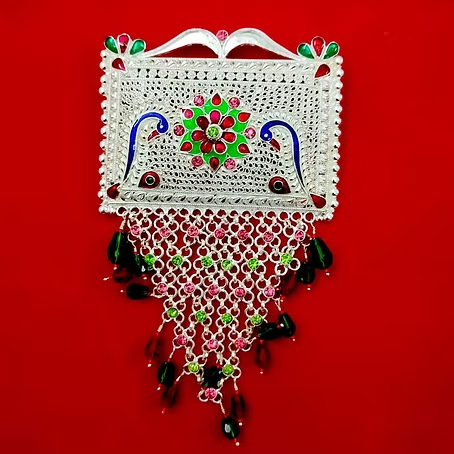What Is Tevta Design? Exploring the Tradition Behind It
- writerforeverynich
- Aug 10, 2025
- 3 min read
Tevta design is more than just a pattern—it is a part of cultural identity. It reflects heritage, craftsmanship, and artistic expression passed down through generations. In this article, we will explore what Tevta design means, its origins, and how it continues to inspire traditional and modern art.
Understanding Tevta Design
Tevta design refers to traditional patterns or motifs used in handmade crafts, especially textiles. These designs often come from rural or tribal communities where art is not just made for beauty but also to express stories, beliefs, and values. The word "Tevta" itself may vary in meaning or use depending on the region, but it often relates to designs crafted using local skills and knowledge.
These patterns can be seen in embroidered clothes, printed fabrics, and even on pottery or jewellery. They often include geometric shapes, floral elements, or symbolic figures that carry deep meaning within a culture.
The Cultural Importance of Tevta Designs
In many regions, especially in South Asia and the Middle East, Tevta designs are part of daily life. These patterns are used in clothing, home decor, and even during festivals and ceremonies. Women in villages pass down these designs to their daughters, teaching them how to stitch or weave with care.
Each design tells a story. Some may represent protection from evil, while others show love, unity, or celebration. These stories are often known only within the communities that make them, which makes each piece unique and personal.
Handcrafted with Care and Skill
Tevta designs are usually handmade. Whether it’s through embroidery, block printing, or weaving, the process requires a lot of patience and skill. Many artisans learn the craft from a young age, watching their elders work with thread, fabric, and dyes. It can take days or even weeks to complete a single piece, depending on the size and detail.
This hard work is what gives Tevta designs their beauty and value. Every piece reflects hours of careful work and dedication. No two items are exactly the same, which adds to their charm.
Regional Variations in Tevta Designs
Tevta designs can vary widely from place to place. In some areas, the designs may be very bold and colourful, while in others they may be more delicate and detailed. The choice of colours, shapes, and materials depends on local traditions, climate, and available resources.
For example, desert regions may use earthy tones like brown and orange, while coastal areas might prefer blues and greens. Each design style reflects the nature, lifestyle, and values of the people who create it.
From Tradition to Modern Fashion

In recent years, Tevta designs have found their way into modern fashion. Many designers and brands are working with local artisans to bring these traditional patterns into today’s clothing styles. You may see Tevta-inspired designs on shirts, scarves, bags, and even shoes.
This trend not only makes traditional designs more popular but also helps support the artisans and their communities. When people buy these handmade items, they help keep the craft alive and provide income to those who make them.
The Role of TEVTA in Skill Development
It is important to note that "TEVTA" also stands for Technical Education and Vocational Training Authority in many regions, especially in South Asia. This government body helps train people in traditional crafts, including textile and fashion design.
TEVTA provides courses in embroidery, tailoring, textile printing, and other skills related to Tevta design. Through these programmes, many young people—especially women—learn to turn their traditional knowledge into a source of income.
By preserving these skills through formal education, TEVTA plays a big role in keeping heritage alive while also supporting economic growth.
Why Tevta Designs Matter Today
In a world full of machine-made products, Tevta designs stand out as symbols of tradition, patience, and personal touch. They remind us of our roots and connect us to stories that are often forgotten.
They also help promote slow fashion—a way of buying fewer but better-quality items that last longer. When we choose handmade Tevta designs, we are not just buying a product; we are supporting a tradition that values time, care, and meaning.
Conclusion
Tevta design is a beautiful mix of history, culture, and art. Whether seen in village crafts or modern boutiques, it carries the spirit of the people who create it. These designs are more than decoration—they are expressions of identity, community, and creativity.
By learning about and supporting Tevta designs, we help keep these stories alive for the next generation. And in doing so, we become a part of a larger tradition that honours art, skill, and cultural pride.
Comments